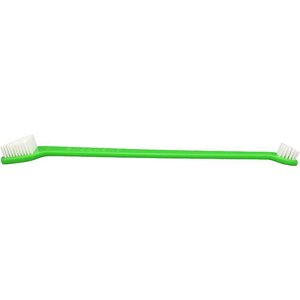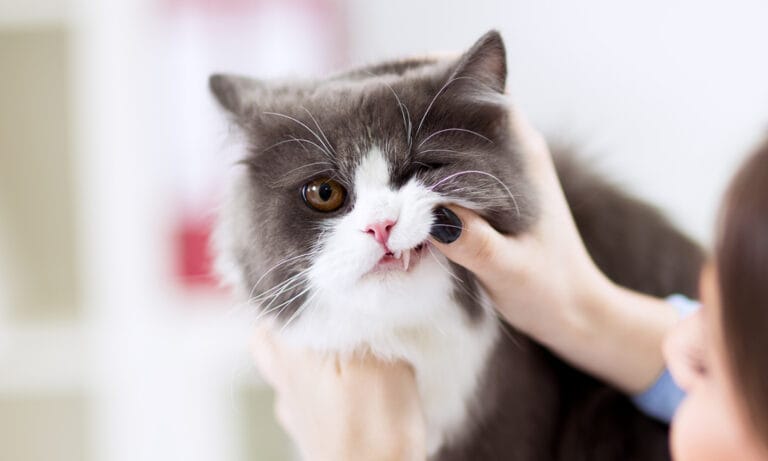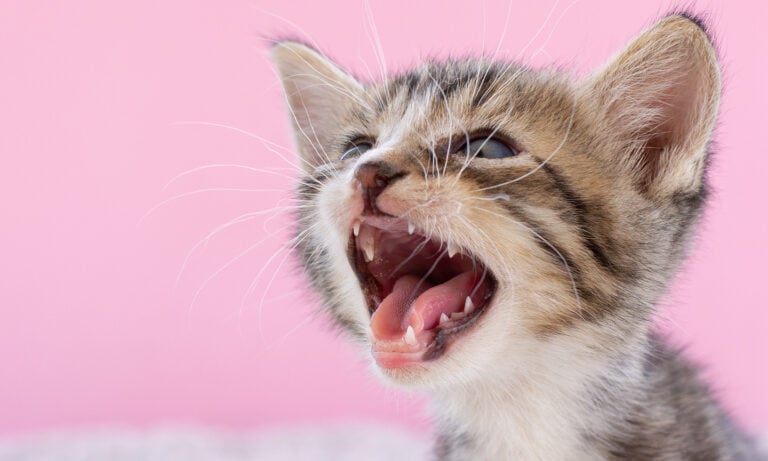A cat’s gums are typically a healthy shade of light pink, so when you discover that your feline friend’s gums have turned white or pale, it’s natural to feel alarmed.
This seemingly minor alteration in color could signify a range of health-related concerns, from dehydration to other conditions, like anemia or heart disease.
We spoke with a vet expert about the potential causes of pale gums in a cat’s mouth and how to reduce the risk of pale gums in cats.
Click to jump to each section:
What Do Pale Gums in Cats Mean?
The exact shade of pink may vary depending on your cat’s pigmentation. The pink color indicates good blood circulation and oxygenation.
Cat gums should also be moist and smooth, which signifies good overall gum health.
Pale gums in cats is abnormal and always a cause for concern.
What Causes Pale Gums in Cats?
- Anemia: A condition in which there’s a reduction in the number of red blood cells. This can result from various causes such as blood loss, bone marrow issues or hemolysis (destruction of red blood cells).
- Shock: A life-threatening condition that occurs when there’s insufficient oxygen, often due to a decrease in blood flow to the body’s tissues. It can be caused by a severe injury, illness or exposure to certain toxins; and it can lead to organ failure and death.
- Heart disease: Certain heart diseases can cause a lack of oxygen in the blood, leading to pale or white gums.
- Blood loss: Blood loss can occur due to trauma, organ damage or certain diseases. A lesser-known but still common cause is parasitic infection such as too many fleas or ticks on a cat.
- Kidney disease: The kidneys play a significant role in blood production. In middle-aged and older cats, pale gums can be a warning sign of kidney disease.
Other less concerning causes of pale gums in cats can include conditions such as stress or mild dehydration, says Dr. Wolf.
It’s important to never try to guess the cause of your cat’s pale gums on your own. Always take your kitty to a veterinarian for a thorough exam if you notice pale or white gums, as this color change can indicate a serious underlying health issue.
Signs and Symptoms: How Do I Know If My Cat Has Pale Gums?
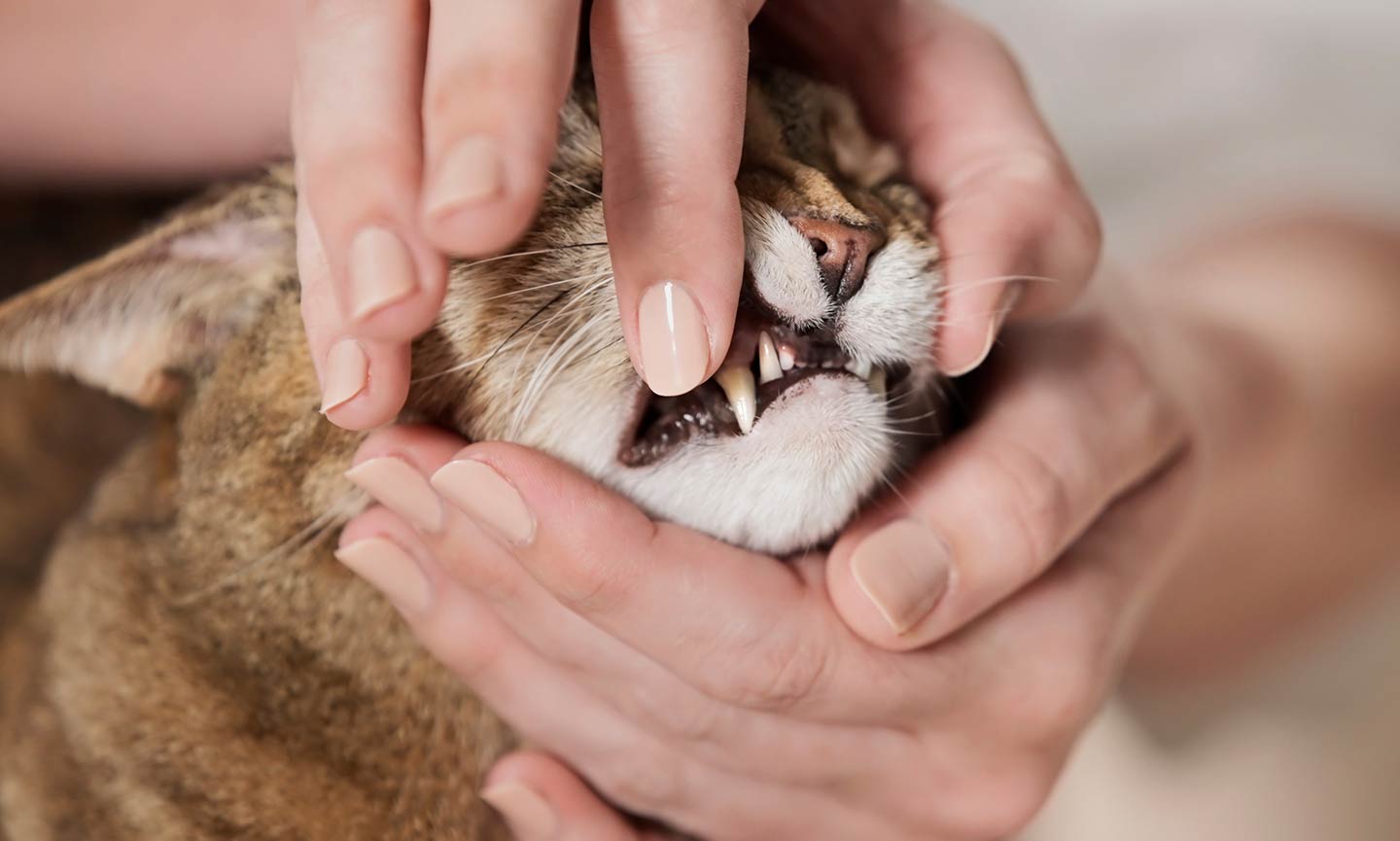
Regularly checking your cat’s gums helps you identify any changes that may indicate a health concern.
Here’s how to check your cat’s gums and identify signs of pale gums:
- Choose a well-lit area and make sure your cat is calm and comfortable.
- Gently tilt their head and lift their upper lip on one side to reveal their gums. Repeat on the other side.
- Examine the color, texture and moisture of the gums.
- If your cat allows you, you can assess their blood circulation by performing a capillary refill time (CRT) test. To do this, gently press your finger on your cat’s gums and then remove the pressure. Observe how quickly the gum color returns to normal. A normal CRT for cats is 1-2 seconds.
Signs your cat may have a health issue:
- Gums that appear white or lighter than their usual shade of pink
- Gums that feel dry or have a rough texture
- A prolonged CRT
What Do Different Cat Gum Colors Mean?
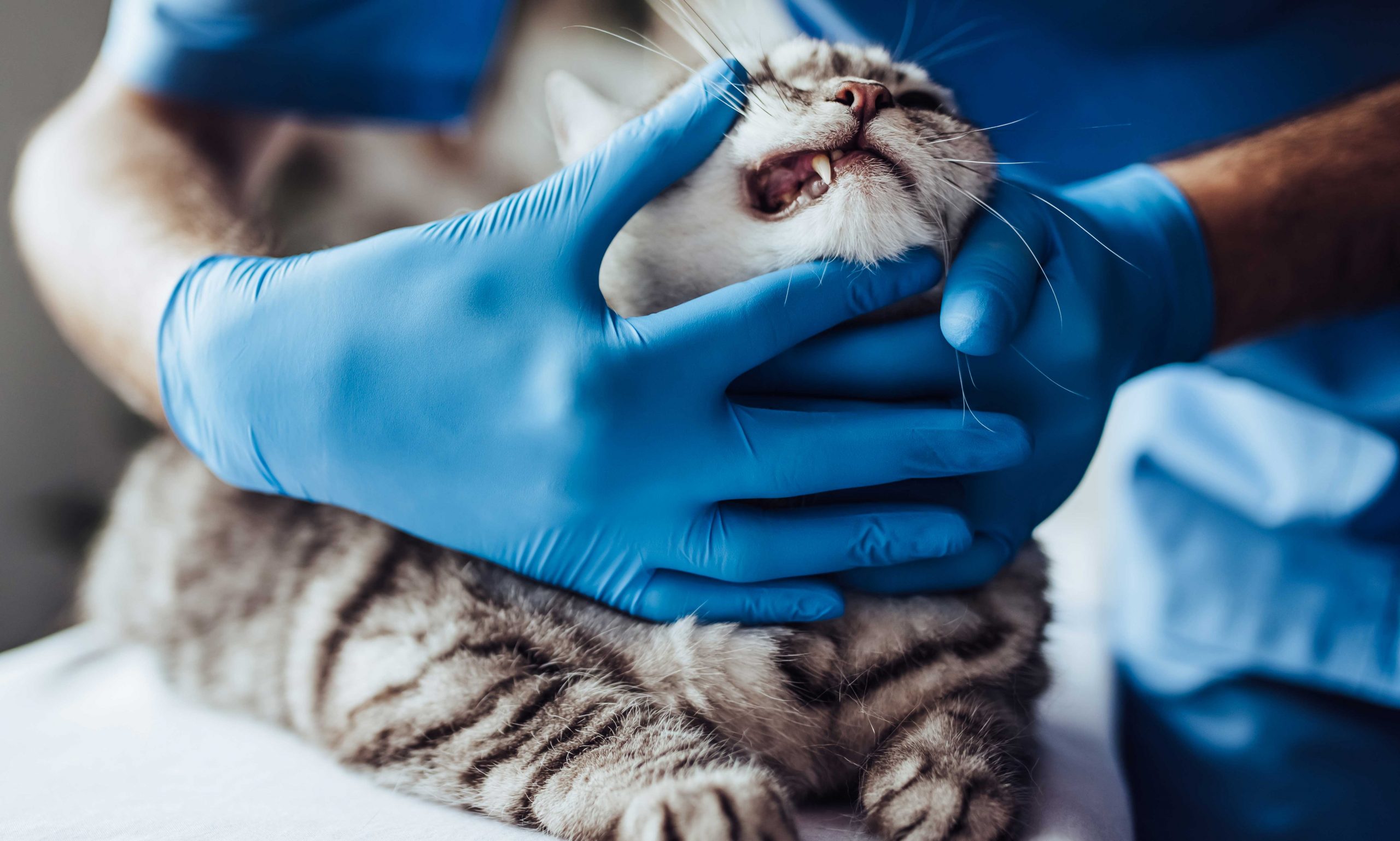
In addition to pink and white, here are some other gum colors and their possible significance:
- Red: Red gums can be a sign of inflammation or infection such as gingivitis or periodontal disease. In some cases, bright-red gums may indicate heat stroke, poisoning or a severe systemic infection.
- Yellow: Yellow gums can be a sign of jaundice, which occurs when there’s a buildup of bilirubin in the blood. Jaundice can result from liver disease, hemolytic anemia or bile duct obstruction.
- Black: Black or dark spots on gums can be a harmless condition in some cats, but in some, it can be a sign of melanoma.
- Blue or purple: Blue or purple gums can indicate a lack of oxygen in the blood. This could be due to respiratory distress, heart disease or a neuromusculoskeletal issue. This is a medical emergency that requires immediate veterinary care.
How Can I Treat My Cat’s Pale Gums?
If you notice that your cat’s gums are pale or white (or any other abnormal color), take them to a veterinarian as soon as possible to determine the cause and begin proper treatment.
Some possible treatment options your veterinarian may use include:
- Blood transfusion: If your cat is anemic or has lost a lot of blood, they may need a blood transfusion to replace the lost blood.
- Medications: In some cases, medication may be prescribed to treat an underlying condition that’s causing pale gums. For example, if your cat has a heart or respiratory condition, medications may be prescribed to improve blood flow and oxygenation.
- Surgery: If your cat has internal bleeding or organ damage, surgery may be required to repair the damage.
- Nutritional supplements: If your cat is anemic due to a nutritional deficiency, such as a lack of iron or vitamin B12, nutritional supplements may be prescribed.
What about at-home treatments for pale gums? These are dependent on the underlying condition, which usually requires veterinary intervention, says Dr. Wolf.
How Can I Prevent My Cat from Getting Pale Gums?

- Regular veterinary check-ups: Schedule routine check-ups with your veterinarian to detect and address potential health issues early.
- Vaccinations and parasite prevention: Keep your cat’s vaccinations up-to-date and use recommended parasite preventatives to protect against infections and diseases.
- Balanced diet: Provide your cat with a balanced, species-appropriate diet to ensure they receive the necessary nutrients to maintain good health.
- Fresh water: Always provide your cat with access to clean, fresh water to prevent dehydration. To encourage your cat to drink more water, consider getting a cat water fountain, like the Catit Flower Plastic Cat Fountain or the Frisco Ceramic Clouds Dog & Cat Fountain.
- Dental care: Regularly brush your cat’s teeth and monitor their oral health. Dental issues can lead to gum disease and other systemic problems. Consult your veterinarian about professional dental cleanings as needed.
- Safe environment: Keep your cat’s living environment free from hazards that could cause injuries—items such as sharp objects or toxic substances.
- Regular exercise and mental stimulation: Engage your cat in regular play and mental stimulation to maintain a healthy weight and prevent stress-related health issues.
- Monitor your cat’s health: Regularly check your cat’s gum color, capillary refill time and their general appearance and behavior. If you notice any changes, consult your veterinarian promptly.
More on cat oral health:
Share:


